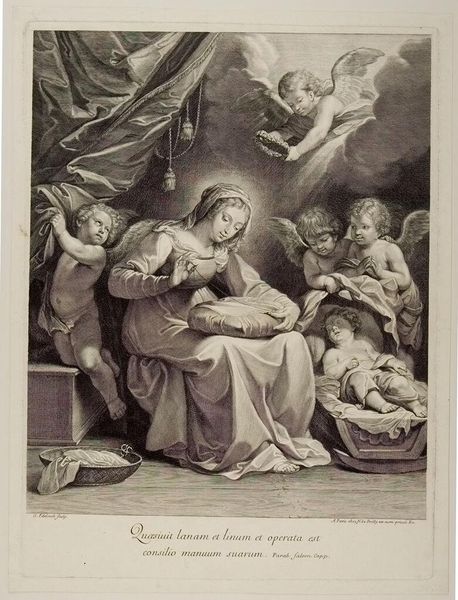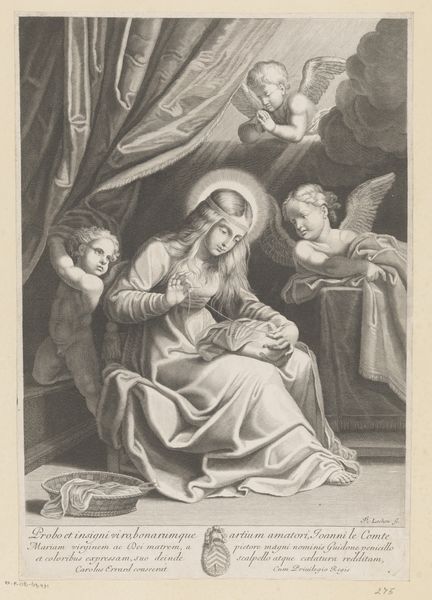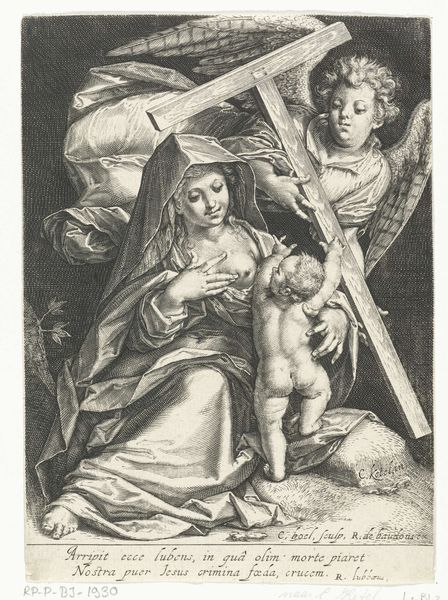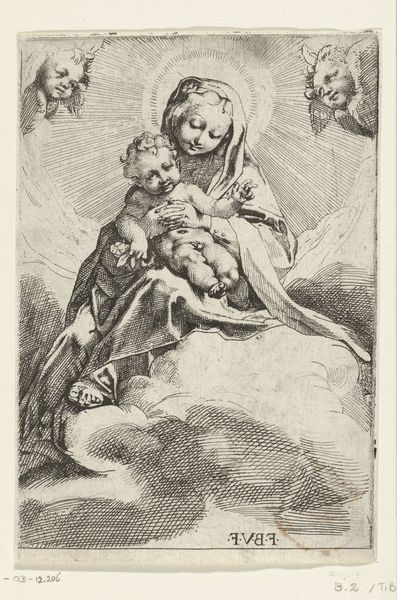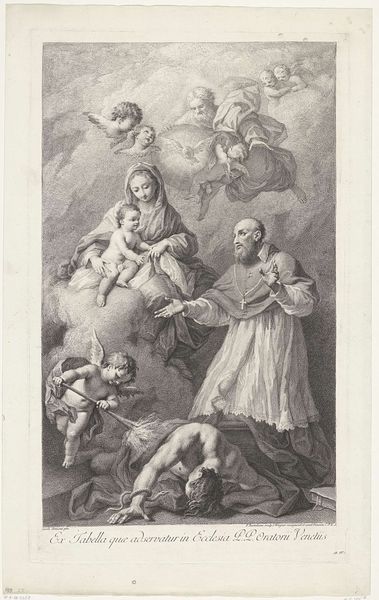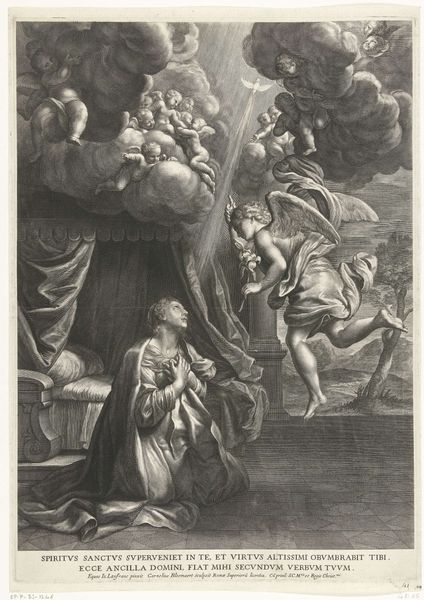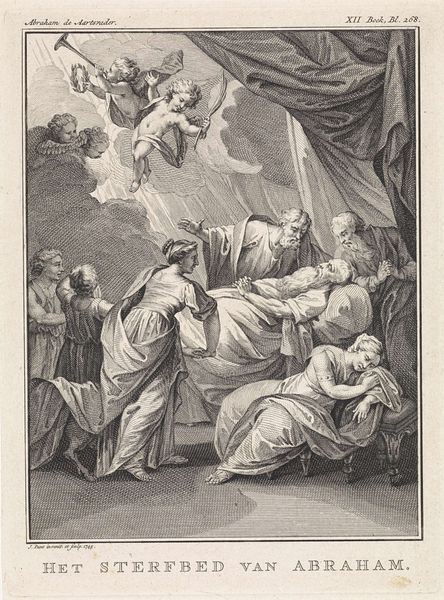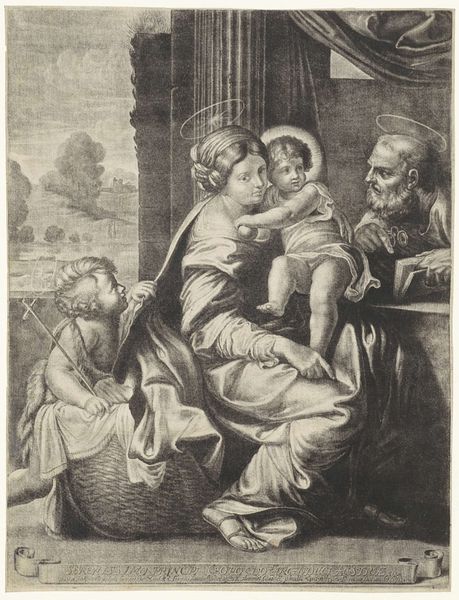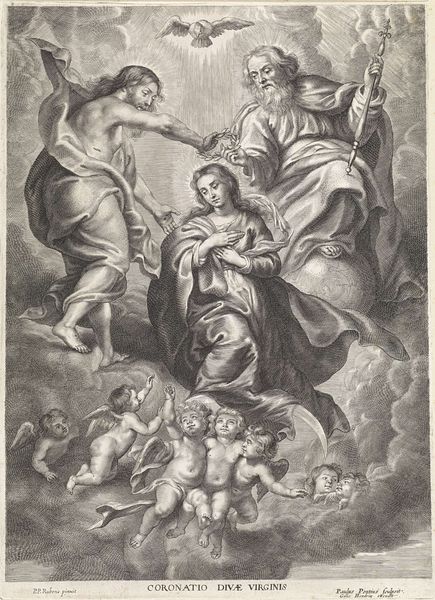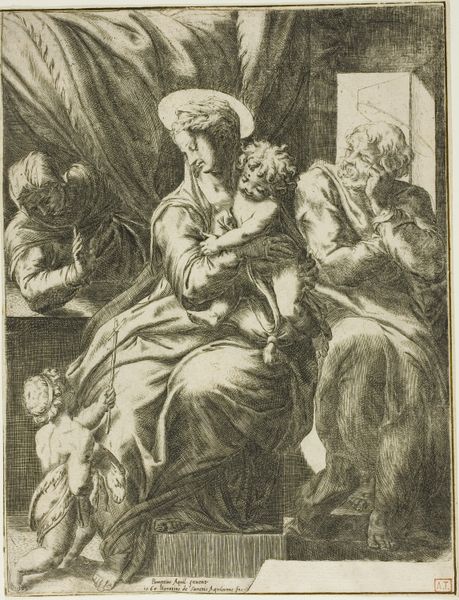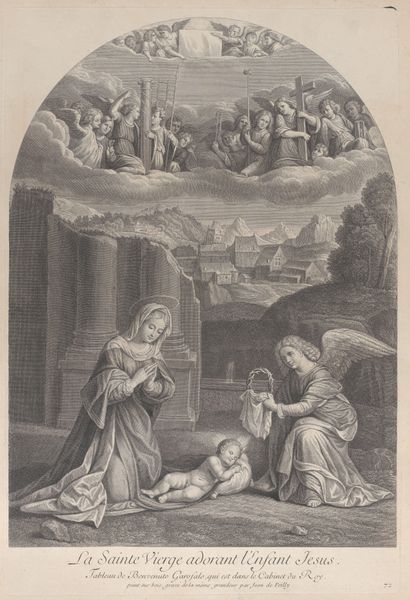
engraving
#
baroque
#
old engraving style
#
figuration
#
line
#
history-painting
#
engraving
Dimensions: height 427 mm, width 320 mm
Copyright: Rijks Museum: Open Domain
Curator: Looking at this engraving by Gérard Edelinck, dating sometime between 1666 and 1707, it’s hard to not be struck by the serene balance and clarity of form. What is your initial reaction? Editor: Well, aside from the visual feast that baroque religious art typically offers, I am immediately drawn to the emphasis on materials. We have the depiction of linen, wool, and textiles so prominent, alongside the labour of their making. This directs attention to the tangible efforts embodied by the Virgin, which, considering the labour usually assigned to women in the time, is very notable. Curator: Absolutely, the tactile rendering of those fabrics is masterful. But observe how Edelinck uses line and form to create a visual hierarchy, leading our eye from the angels above to the central figures of Mary and the Christ child. The composition, relying on clear, idealized forms, serves to elevate the subject matter, pulling us into a theological realm. Editor: Theological perhaps, but also intensely human! This isn’t some remote deity; we are seeing a depiction of domesticity. Her labour has earthly purpose. What material conditions enabled such luxury to become the theme of an artwork? We must also consider this question of the social fabric in which art like this emerges. Curator: And, beyond that social framework, consider how the swirling lines, the contrast between light and shadow—the formal qualities—draw our attention to her face, highlighting her devotion. It is an arrangement meant to communicate an inner state through purely visual means, beyond a mere labour of textile production. The engraving medium itself and its reproductive capabilities is very central to that function of spreading a visual gospel, so to say. Editor: Yes, the use of engraving allowed the spread of religious iconography to a much broader audience. Yet the very act of reproducing images speaks to labor and industrial processes. It highlights the socio-economic structure that supports both the physical production and cultural relevance of such scenes. And for me the real core of understanding how these scenes reached their audiences. Curator: An interesting reflection indeed; so, looking at "Maria en Christus als kind met vier engelen", we have an interesting collision between the ideal of the baroque form and its expression of the material world and labour! Editor: Yes, and I think these competing frameworks offer richer ground for reflecting on the artwork’s history and reception across many layers of production.
Comments
No comments
Be the first to comment and join the conversation on the ultimate creative platform.

